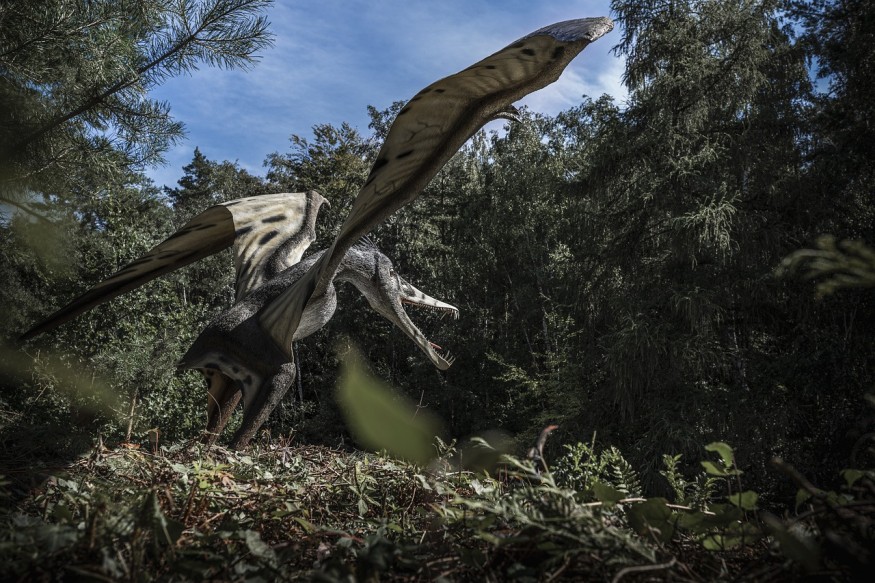Giant flying reptiles called pterosaurs once ruled Earth's skies 100 million years ago before their demise, following the planet-killing Chicxulub asteroid that struck our planet during the Late Cretaceous period 66 million years ago. These prehistoric reptiles went extinct along with their close cousin dinosaurs, as well as with most other animal and plant life. Having left no descendants, the fossils of pterosaurs are the only evidence of their existence, which have been found in different parts of the world.
Now, a new study by paleontologists revealed the discovery of ancient remains in South America, making it the oldest fossil record of the large flying reptile, whose bone represents a pterosaur from the family Azhdarchidae. This family includes some of the largest flying animals that ever lived on Earth such as the Quetzacoatlus, whose wingspan can stretch up to 40 feet.
Giant Flying Reptile

Azhdarchids like the pterosaurs are the first vertebrates or animals with backbones that evolved to have the capability of flight. This biological feature enabled these winged reptiles to hunt their prey both on land and air, at a time when the notorious dinosaurs also existed. Although the winged reptiles also died from the Chicxulub impactor, the mass extinction event also paved the way for another group of flying animals: avian dinosaurs, whose descendants became the birds that we know today.
In the new study published in The Magazine of the Argentine Museum of Natural Sciences, researchers discovered fossils of the giant flying reptile in southern Argentina's province of Rio Negro, in the region of Patagonia. In particular, the paleontologists found only a single neck vertebra bone along the banks of large man-made lake, known as the Ezequiel Ramos Mexia Reservoir.
Pterosaur Remains
The pterosaur remains, which was discovered in rocks from a geological formation, is the oldest fossil record in South America, since the research team estimated that the incomplete neck vertebra bone dates back approximately 100 million and 90 million years ago.
Outside South America, some of the oldest pterosaur fossils can be found in Australia during the Early Cretaceous period approximately 107 million years ago. This is according to a separate study published in the journal Historical Biology earlier this year. The said bones of the extinct flying reptile were discovered in the state of Victoria during the late 1980s at a fossil site called Dinosaur Cove.
Pterosaurs Are Not Dinosaurs
In the past, the Azhdarchid pterosaurs were often mistaken and classified as dinosaurs. However, paleontology experts assert that calling a pterosaur a dinosaur is an error even though both animals share a common ancestor. Furthermore, even the American Museum of Natural History also neither classify these giant flying reptiles as a bird or a dinosaur.
Despite their differences, these reptiles also share the same habitat just like in the Dinosaur Cove, which consists of the oldest pterosaur remains discovered during the Lower Cretaceous period of Australia. This is the case at least based on existing records.
© 2025 NatureWorldNews.com All rights reserved. Do not reproduce without permission.





